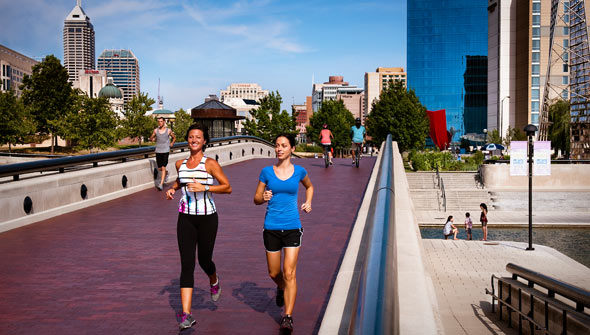White River State Park

White River State Park, located between downtown Indianapolis and the urban university campus of IUPUI, is Indiana’s only urban state park. Covering over 250 acres, it hosts many local attractions and activities year and its rich history reflects the cultural and environmental progress and development the City has experienced over the years.
When John McCormick first settled Indianapolis in 1820, the chosen location was near the intersection of the White River and Fall Creek. Today, McCormick’s Rock honors the founding of Indianapolis. Shortly after the settlement of the area, development of the Central Canal was in the works to serve as a trade route for commercial goods. However, after only 9 miles of the canal was completed, construction was stalled near Broad Ripple Village.
A wide variety of development was completed along the White River, and in 1979, a 10-member, governor appointed, White River (State) Park Development Commission was created. A master plan by Sasaki Associates called for the preservation and enhancement of the natural features of the riverside location integrated with public art, cultural attractions and entertainment venues.
The first attraction to call the Park home was the Indianapolis Zoo in 1988 followed soon after by the Eiteljorg Museum of American Indians & Western Art. Today the Park hosts Victory Field (home to the Indianapolis Indians), the NCAA Hall of Champions Museum, the Indiana State Museum, and The Lawn at White River State Park Concert Venue. The central canal has been reimagined as a pedestrian spine that reaches from the White River to the north side of Downtown and includes its own destinations like the Congressional Medal of Honor Memorial, near Military Park. Recently, a portion of the Cultural Trail was completed that connects the Park to the cultural districts throughout the City.
White River State Park hosts a wide variety of activities for Indianapolis residents and visitors. It has the green space, trails, trees, and waterways typically found in Indiana’s state parks and offers the best of the City’s urban cultural destinations.
